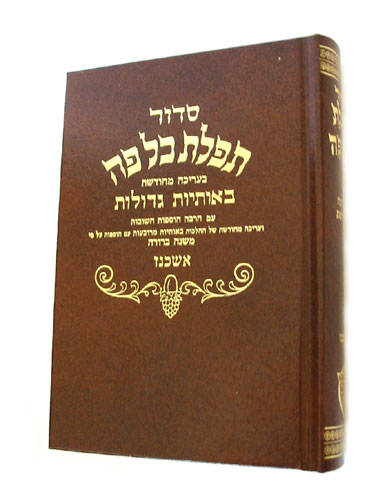A Siddur is a Jewish prayer book that contains set daily prayers. The root of the Hebrew word Siddur is Seder meaning order as this is precisely what the book does- sets a fixed order of prayers.

A Little History…
- The earliest parts of the Siddur are the Shema Yisrael prayer and the Priestly Blessing both of which feature in the Bible. It is Jewish tradition that the prayer called Shemonah Esreh or Amidah (meaning Eighteen or Standing respectively, due to the prayer once having being made up of eighteen blessings as opposed to the nineteen of today and to it being recited while standing) was written by the men of the Great Assembly in the time of the scribe Ezra at the end of the Biblical period.
- The earliest Siddur was printed in 1486 in Italy but was not mass-distributed until 1865. The first English translation of the Siddur appeared in London in 1738.
What is the Siddur made up of?
Part of the prayers in Siddur are taken from the Five Books of Moses and the Book of Prophets. On top of this, Jewish sages throughout history added prayers as well as hymns.
Rav Amram Gaon drew up the first codification of the Siddur in approximately 850 CE. Rav Saadia Gaon composed a Siddur in which the rubrical matter is in Arabic half a century later. In the eleventh century a Siddur was created based on the teachings of the famous scholar Rashi and Maimonides appended another formulation of the prayers and this forms the basis of Yemenite liturgy. Since then Siddurs have had the same basic order and content.
Different Kinds of Siddurs
Siddurs vary according to the origins of the Jewish people using them. Sephardic Jews’ Siddurs (including the Jewish people who lived in Spain and Portugal) vary from that of Yemenite Jews, which is different to that of Hasidic Jews which is unlike that of Ashkenazi Jews, which varies from Italian Jews…and the list goes on.
Most of the differences between Siddurs are slight difference in the wording of the prayers. Sometimes the order of preparation for the Amidah prayer which we mentioned above is vastly different. Some Sephardic Siddurs are overtly Kabbalistic.
How often is the Siddur used?
The Siddur is used on a daily basis by observant and many less-observant Jews. Judaism views personal prayer as extremely important but the Siddur was composed so that there would be a set of prayers when personal prayers became less and less frequent. The Siddur ensures that the Jewish people come together to pray as a community, holding the fabric of the Jewish community together until the Temple in Jerusalem will be rebuilt upon which they will once again serve G-d in the Temple with offerings.
Uriel Sela is the owner of Ajudaica.com. Enter our shop if you are intrested in various kinds of Jewish prayerbooks. These books are featured in category:
http://www.ajudaica.com/category/60/Prayerbooks/
Photo by Ajudaica.com

